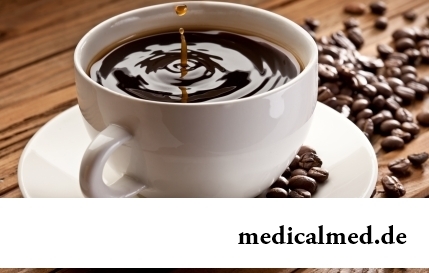





Nalbufin
Application instruction:
Nalbufin – the anesthetizing opioid medicine.
Form of release and structure
Nalbufin is issued in the form of solution for injections: colourless or slightly painted, transparent or poorly opalescent (on 1 ml in glass ampoules, on 5 or 10 ampoules in a cardboard pack).
Is a part of 1 ml of injection solution:
- Active ingredient: a hydrochloride of a nalbufin (in the form of a dihydrate) – 10 or 20 mg;
- Auxiliary components: anhydrous citric acid, dihydrate sodium citrate, sodium chloride, water of a plant louse of injections.
Indications to use
- The expressed pain syndrome of various etiology, including a myocardial infarction, and also pains connected with malignant new growths, carrying out gynecologic interventions, which developed in the postoperative period;
- The general anesthesia (as additional medicine).
Contraindications
Absolute:
- Intracranial hypertensia;
- Acute alcoholic poisonings, alcoholic psychosis;
- Head injuries;
- Epileptic syndrome;
- The expressed oppression of the central nervous system and breath;
- Diseases of abdominal organs in an acute current (Nalbufin's introduction perhaps after diagnosis);
- Medicinal dependence to Promedolum, morphine, fentanyl and other morfinopodobny medicines (because of high probability of emergence of a withdrawal);
- Operative measures on a liver, a gall bladder, intra hepatic and extrahepatic bilious channels (gepatobiliarny system);
- Hypersensitivity to drug components.
Relative (Nalbufin it is necessary to apply with care in the presence of the following states / diseases):
- Renal and/or liver failure;
- Cachexia;
- Respiratory insufficiency (including connected with uraemia, chronic obstructive pulmonary diseases);
- Premature births and estimated immaturity of a fruit;
- Pregnancy and period of breastfeeding;
- Children's (up to 18 years) and advanced age.
Route of administration and dosage
Nalbufin's solution depending on indications is entered intramusculary or intravenously (preliminary cultivation by isotonic solution of sodium chloride is necessary).
The mode of dosing is defined by the doctor individually depending on portability of drug, expressiveness of a pain syndrome, features of the patient.
The recommended adult dose at a pain syndrome – 0,15-0,3 mg/kg. Between introductions of single doses of drug it is necessary to observe a break not less than 4 hours. The maximum doses of Nalbufin make: daily – 2,4 mg/kg, one-time – 0,3 mg/kg. Duration of use should not exceed 3 days.
At suspicion of a myocardial infarction once enter 20 mg of injection solution intravenously slowly (if necessary possibly increase in a dose up to 30 mg). In the absence of positive dynamics in 30 minutes it is possible to enter one more single dose.
Nalbufin's dose for premedication – 0,1-0,2 mg/kg. For introduction to an anesthesia solution appoint in a dose 0,3-1 mg/kg, then (for maintenance of an anesthesia) – each 30 minutes on 0,25-0,5 mg/kg.
At patients with opiate addiction cancellation symptoms which are stopped by morphine can develop. If before Nalbufin's use the patient received morphine, codeine or other opioid anesthetizing drugs, appoint 25% of a standard dose.
The doctor having experience with Nalbufin has to carry out therapy. It is necessary to provide existence of means for overdose treatment, including Naloxonum, and also the equipment for carrying out artificial ventilation of the lungs and an intubation.
Side effects
- Nervous system: drowsiness, dizziness, confusion of consciousness, slackness, headache, excitement, euphoria or depression;
- Cardiovascular system: change (decrease or increase) of arterial pressure, takhi-or bradycardia;
- Respiratory system: reduction of minute volume of breath;
- Alimentary system: vomiting, nausea, dyspepsia, dryness in a mouth, spastic pains;
- Allergic reactions: urticaria, throat hypostasis, itch, sneezing;
- Others: sweating strengthening, morbidity in an injection site of injection solution, a withdrawal (it is shown as weakness, spastic abdominal pains, dacryagogue, vomiting, nausea, a rhinorrhea, fervescence, feeling of alarm).
Special instructions
It is not necessary to exceed the doses recommended in the instruction as it can lead to development of physical dependence.
Ambulatory patients for the period of therapy need to abstain from control of motor transport and performance of potentially dangerous types of the works demanding bystry psychomotor reactions and special attention.
Medicinal interaction
At the same time with anesthetics, anxiolytics, antidepressants, hypnotic drugs and antipsychotic drugs Nalbufin it is necessary to apply under strict medical control (at use of similar combinations dose adjustment can be required).
At the same time it is impossible to appoint Nalbufin with alcohol and other opioid anesthetizing medicines.
At combined use with penicillin and derivatives of a fenotiazin the risk of development of dispepsichesky disturbances in the form of vomiting and nausea increases.
Terms and storage conditions
To store in protected from light, the place, unavailable to children, at a temperature of 15-30 °C.
Period of validity – 2 years.
If to smile all twice a day – it is possible to lower blood pressure and to reduce risk of developing of heart attacks and strokes.

About 10-15 years ago existence of the computer in the apartment of the Russian was considered as a rarity and office rooms were only on перв...
Section: Articles about health
Dark circles (bruises) under eyes – a shortcoming with most of which often fight against the help of cosmetics (proofreaders, saloon procedures and so forth), eliminating only its visibility. However, according to doctors, skin around eyes – the indicator of many disturbances in an organism...
Section: Articles about health
From the failure of work of immune system which is shown in the form of an allergy, statistically, more than 40% of the population of the globe suffer. In most cases pathological reactions cause the substances which are contained in food stuffs, hair of animals, medicines, goods of household chemicals, cosmetics, pollen of plants, etc. On the one hand, the disease such is capable to spoil quite thoroughly to the person life....
Section: Articles about health
Coffee – favourite drink of many. For the last decades it more than once already declared very harmful, extremely useful and even...
Section: Articles about health
Herpes simplex of the first type (the infectious disease which is shown periodic bubble rashes on lips is called) – one of the most widespread illnesses. Statistically, only 5% of inhabitants of our planet are unreceptive to its activator, and...
Section: Articles about health
The sudden heat on all body which is followed by perspiration and a cardiopalmus – the phenomenon familiar to many people. Most often such states called by "inflows" result from nervous or physical overworks and disappear right after rest. However in certain cases similar reaction of an organism can speak about diseases which need treatment. What? About it below....
Section: Articles about health
One of the major chemical processes happening in a human body are oxidation reactions. They go with participation of fats...
Section: Articles about health
Partial and the more so full loss of hearing significantly reduces quality of life. Difficulties with communication lead to loneliness and isolation. The person who badly hears experiences difficulties with social and professional implementation, quite often has problems in...
Section: Articles about health
The state of health of the person in many respects depends on food. The organism will well function if during food it receive only useful substances, necessary vitamins and microelements. In this case there will be no problems with digestion, with excess weight, and intellectual and physical activity will remain at the high level....
Section: Articles about health
All are familiar with cold, and practically everyone believes that he has sufficient knowledge and experience that correctly to treat it. N...
Section: Articles about health
Scientists have no unambiguous opinion on a proximate cause of emergence of a carcinoma cutaneum today. Only the factors promoting development of this illness are precisely established. Treat them: long impact on skin of ultraviolet rays, radioactive...
Section: Articles about health
The kid who was recently born is surrounded with love of adult family members and their cares without which the baby cannot exist. Some parents consider that gentle attachment and caress are quite enough that the child correctly developed and was happy, but it not so. It is important to know as much as possible about specifics of care of the baby, the reasons of his behavior and possible problems. Only the "able to see" love will provide to the little man that it is necessary for him....
Section: Articles about health
Each person has easy indispositions which he transfers "standing", trying not to ask for medical care. Argu...
Section: Articles about health
Zone hypostases under eyes - very widespread problem giving to people is a lot of inconvenience. Hypodermic fabric in these parts has very loose structure and almost does not contain collagenic fibers. Besides, the skin covering подглазья constantly is exposed...
Section: Articles about health
The drugs stopping or oppressing life activity of pathogenic microorganisms are widely applied in clinical practice from 40th years of the last century. Originally antibiotics were called only substances natural (animal, vegetable or microbic) origins, but over time this concept extended, and it includes also semi-synthetic and completely artificial antibacterial drugs....
Section: Articles about health
One of the useful properties presented to the person by the nature is ability to feel fear. This ability is called a signal...
Section: Articles about health
Weakness of an ankle joint – very widespread problem. Its existence is demonstrated by tendency to a podvorachivaniye of legs when walking on heels, frequent painful sprains, pain on average and anonymous toes even after small nagruzo...
Section: Articles about health
The way of life of people promptly changes from year to year: if about ten years ago the personal computer was not in each family, then today already very few people do without this device. Certainly, and children master the computer at full speed: they not only play on it games, but also study, and write school works, and search for necessary information....
Section: Articles about health
Visit of doctors – business not the most pleasant, and many people do not hurry to undergo necessary planned inspections. Such behavior...
Section: Articles about health
What woman does not dream of a beautiful and thick hair? While physicians developed difficult schemes on hair transplant, in the industry of hairdresser's art a few years ago there was a sensation – methods of hair extension appeared. It would seem, dreams came true...
Section: Articles about health
Doctors claim that the people not so familiar with a dorsodynia occur among adult Russians very seldom. At the same time the vast majority of the patients who are periodically testing this indisposition do not hurry to ask for medical care at all. On the one hand, there is an opinion that feelings of this sort at mature age are nearly natural phenomenon which is not doing serious harm to health. With another – practice of self-treatment various obezbol is eurysynusic...
Section: Articles about health
Iodine - one of thirty most important microelements in our organism. The main role of iodine consists in synthesis thyroid гормо...
Section: Articles about health
Mushrooms - the surprising inhabitants of our planet having a set of wonderful qualities. Thanks to one of them, a mold mushroom of Penicillium notatum, the first natural antibiotic - penicillin was received nearly 80 years ago. The mankind is obliged to this opening миллио...
Section: Articles about health
The words "disease" and "patient" not without reason come from one root – "pain". As a rule, symptoms of illnesses thoroughly spoil to patients life. However from this rule there are exceptions. Some diseases are shown by signs which can cause even positive emotions. It is a pity only that the majority of such illnesses are heavy and incurable....
Section: Articles about health
Many parents of children at the age of 2-4 years face excessively whimsical behavior of the child. The kid exhausts constant crying...
Section: Slideshow
The thought that the mass of their body is too big at least once in life visits from 80 to 95% of women. Many women are so obsessed with this idea that constantly try all new and new ways of weight reduction. Considerable part of these method...
Section: Articles about health
The depression not without reason is considered one their main troubles of our century: for scientific and technical progress, acceleration of rate of life and a surplus of information of people it is forced to pay with stresses, negative emotions and weakening of protective forces of an organism. As a result widely the states which are characterized by the increased uneasiness, falling of interest in life, spiritual and physical discomfort extend....
Section: Articles about health
